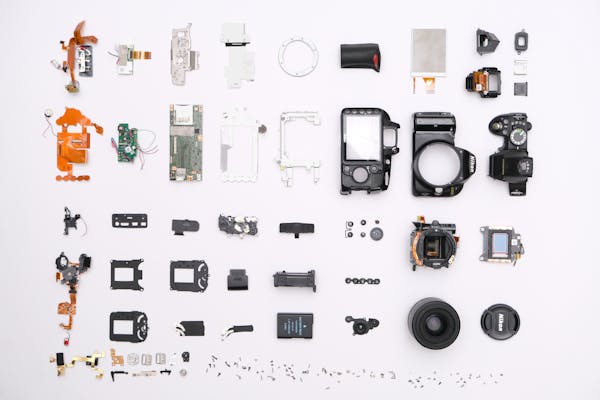Security camera footage refers to the recorded video or images captured by surveillance cameras placed in various locations to monitor activities for security purposes. This Security Camera Footagecan be live or stored for future review and is an essential component of modern security systems.
Importance and Relevance
In an era where safety and security are paramount, security camera footage has become crucial for protecting properties, deterring crime, and providing vital evidence. Its applications span across homes, businesses, and public spaces, making it a versatile tool in the fight against crime and ensuring public safety.
History and Evolution of Security Cameras
Early Developments
The concept of video surveillance dates back to the 1940s, with the first known system developed by Siemens AG in Germany. Initially used for observing rocket launches, these early systems laid the groundwork for modern security cameras.
Technological Advancements
Over the decades, technological advancements have transformed security cameras from rudimentary devices to sophisticated systems with high-definition capabilities, internet connectivity, and advanced analytics. The shift from analog to digital systems marked a significant leap, enabling clearer images and more reliable storage options.
Types of Security Cameras
Analog Cameras
Analog cameras were the first type of security cameras, recording video in a format directly viewable on televisions or VCRs. Despite their lower resolution, they remain in use for their simplicity and cost-effectiveness.
Digital Cameras
Digital cameras convert video signals into digital data, offering better image quality and easier storage. They form the backbone of modern surveillance systems.
IP Cameras
Internet Protocol (IP) cameras send and receive data via a computer network, allowing remote viewing and management. Their advanced features include high resolution, video analytics, and integration with other security systems.
Wireless Cameras
Wireless cameras offer the flexibility of installation without the need for extensive cabling. They connect via Wi-Fi, making them ideal for both residential and commercial use.
Technical Specifications
Resolution
Resolution determines the clarity of the footage. Common resolutions include 720p, 1080p, and 4K, with higher resolutions providing more detailed images.
Frame Rate
Frame rate, measured in frames per second (fps), affects the smoothness of video playback. Typical security cameras offer 15 to 30 fps.
Storage Solutions
Storage options vary from local storage on DVRs/NVRs to cloud-based solutions, each with its own advantages and considerations for security and accessibility.
Connectivity Options
Connectivity options include wired (Ethernet) and wireless (Wi-Fi) connections. Wired systems often provide more stable connections, while wireless systems offer greater flexibility.
Applications of Security Camera Footage
Home Security
Homeowners use security cameras to monitor entrances, yards, and other vulnerable areas, providing peace of mind and deterring potential intruders.
Commercial Use
Businesses employ surveillance systems to protect assets, monitor employee activity, and ensure customer safety.
Public Safety
Security cameras in public areas help authorities monitor and respond to incidents, enhancing overall community safety.
Law Enforcement
Law enforcement agencies use security camera footage for investigating crimes, gathering evidence, and monitoring public events.
Benefits of Security Camera Footage
Crime Deterrence
Visible security cameras act as a deterrent to criminal activity, reducing the likelihood of theft, vandalism, and other crimes.
Evidence Collection
In the event of a crime, security camera footage provides valuable evidence that can aid investigations and support legal proceedings.
Monitoring and Surveillance
Security cameras enable continuous monitoring of areas, allowing for real-time responses to incidents and ongoing surveillance of activities.
Challenges and Limitations
Privacy Concerns
The use of security cameras raises privacy issues, particularly regarding the monitoring of public spaces and the potential for misuse.
Data Management
Handling large volumes of video data requires effective storage solutions and management practices to ensure accessibility and security.
Technological Barriers
Despite advancements, challenges such as network reliability, cybersecurity threats, and technical malfunctions persist.
Innovations in Security Camera Technology

AI and Machine Learning Integration
Artificial intelligence and machine learning enhance security cameras with capabilities such as facial recognition, object detection, and behavioral analysis.
Cloud Storage Solutions
Cloud storage offers scalable and secure options for storing vast amounts of video data, facilitating easier access and management.
Enhanced Night Vision
Advancements in infrared technology and low-light sensors improve night vision capabilities, ensuring clear footage in all lighting conditions.
Future Prospects
Smart Home Integration
Security cameras are increasingly integrated into smart home systems, allowing for seamless control and monitoring through centralized platforms.
360-Degree Coverage
Future cameras will offer comprehensive 360-degree coverage, eliminating blind spots and providing complete situational awareness.
Advanced Analytics
Continued advancements in video analytics will enhance the ability to detect anomalies, predict incidents, and automate responses.
Comparative Analysis
Traditional Security Systems vs. Modern Security Cameras
Traditional systems rely on basic monitoring and manual intervention, while modern cameras offer advanced features such as remote access, high-definition video, and intelligent analytics.
DIY vs. Professional Installation
DIY installation provides cost savings and flexibility, while professional installation ensures optimal placement, configuration, and ongoing support.
Installation and Maintenance
Step-by-Step Installation Guide
- Planning: Identify areas to monitor and select appropriate cameras.
- Mounting: Install cameras at strategic locations, ensuring stable and secure mounting.
- Wiring/Connectivity: Connect cameras to power sources and network systems.
- Configuration: Set up camera settings and integrate with security systems.
- Testing: Verify functionality and adjust as necessary.
Maintenance Tips and Tricks
Regular maintenance includes cleaning lenses, checking connections, updating software, and reviewing footage to ensure optimal performance.
Legal and Ethical Considerations
Laws and Regulations
Compliance with local laws and regulations is essential when installing and operating security cameras to ensure privacy and legal adherence.
Ethical Surveillance Practices
Ethical considerations involve transparent usage, minimal intrusion, and respectful handling of recorded footage to balance security needs with individual privacy.

